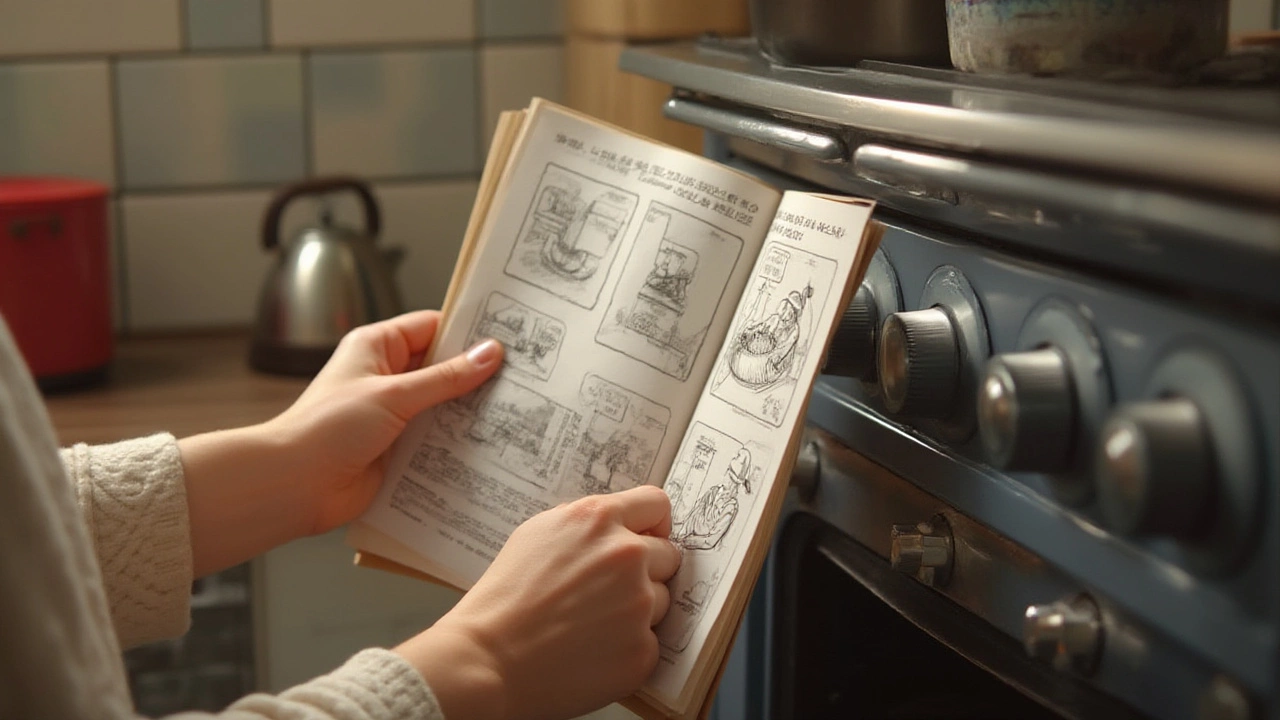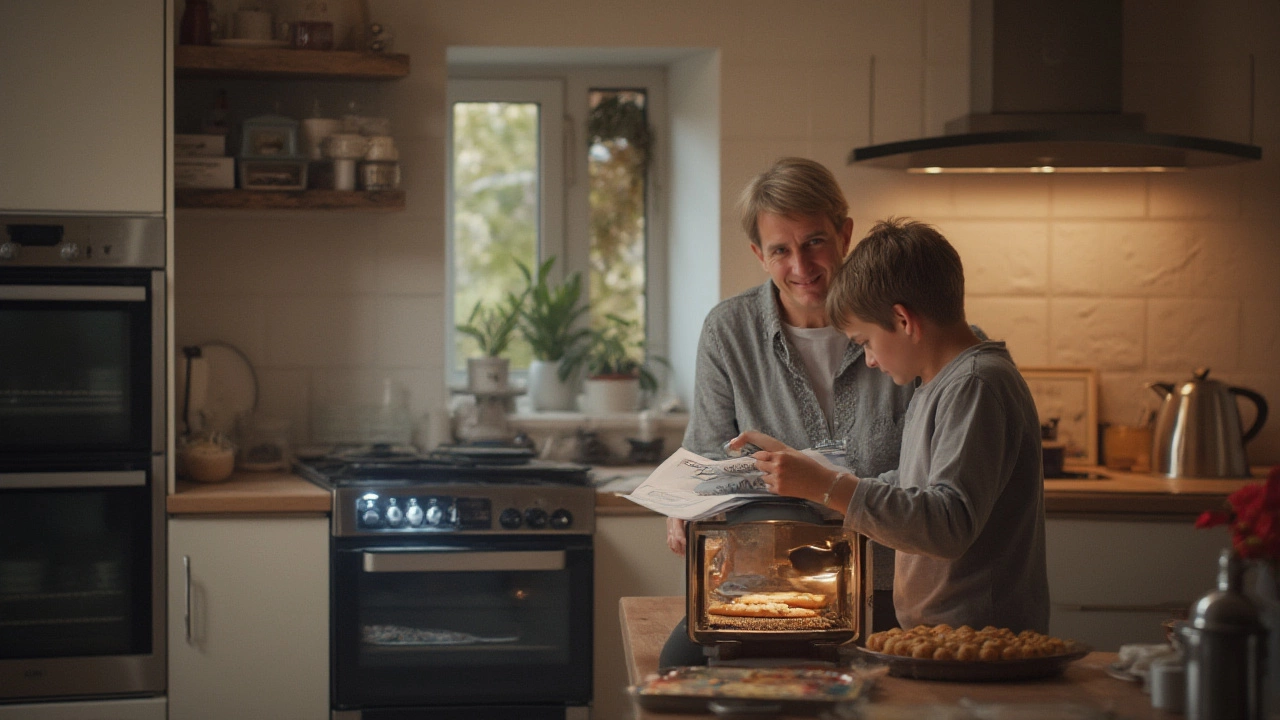Picture this: Dinner is ready to go in, your guests are arriving in an hour, but suddenly your oven just will not turn on. Or maybe it heats up, but only enough to give your dish a lukewarm send-off into the world. Ovens act up all the time, and—trust me—it is almost never convenient. But here’s the kicker: Most common oven problems have surprisingly quick fixes before you spend cash on a pro. You do not need to be an expert; you just need a good guide and a bit of patience. Let's save your dinner (and your wallet).
Recognizing the Problem: What’s Wrong With Your Oven?
Right off the bat, you need to pay attention to what your oven is actually doing—or not doing. Sometimes, the symptoms are obvious: it won’t turn on, it does not heat at all, or it heats way too much. There are noisier problems too, like strange beeps, weird smells, or lights that blink like it’s sending Morse code. Knowing the problem makes everything way easier. If you’re smelling gas when you shouldn’t, safety first—shut it off and step outside (call a pro for gas leaks). For electric ovens, flickering lights, no sounds at all, or a stuck door can point you in the right direction.
Keep in mind, ovens come in different flavors: gas, electric, convection, and dual fuel. Each has quirks, but most troubleshooting steps are pretty similar. Write down any error codes you see on the display. Many modern ovens flash codes like “F3” or “E2”—that’s your oven's way of giving you a clue. Jot down anything that lights up, flashes, or hums. If the oven worked fine a week ago, did you notice anything odd? Clicking, power trips, or that classic burning smell? That info goes a long way.
Here’s something interesting—a survey by Whirlpool in 2022 found that around 62% of oven problems are basic things users can fix, like bad connections, dirty sensors, or a tripped breaker. So don’t panic yet. Check the obvious stuff before reaching for your phone.
Basic DIY Checks and Quick Fixes for Ovens
Roll up your sleeves; most oven issues don’t require special tools. You’d be surprised by the number of friends who have called me in a panic, only to realize they never plugged the oven back in after cleaning behind it. Let’s run through the basic checks first:
- Power Source: If your oven is dead—no lights, no beeps—verify that it’s plugged in. It sounds silly, but I’ve seen it happen dozens of times, especially in tight kitchens or after a deep clean.
- Breaker Box: Head over to your home’s breaker panel. If the circuit is tripped, reset it. Ovens use lots of power, and overloaded circuits can flip off with a tiny surge.
- Settings and Controls: Double-check timer options, child locks, or delay start. Sounds obvious, but accidentally bumping a delay timer or the oven lock messes up a preheat in a snap.
- Oven Door: Many ovens won’t start unless the door is shut completely. If the door won’t close or the light stays on, check for stuck crumbs, warped gaskets, or a loose latch.
- Heating Elements: For electric ovens: open the oven, switch it to bake or broil, and look at the top and bottom. The metal rods should glow red. If not, you might be looking at a busted element.
- Gas Supply: For gas ovens: Flip that gas shutoff valve and see if it moves easily. Many people turn off the gas accidentally when cleaning or moving the stove.
- Self-Clean Lock: After a self-clean cycle, the oven stays locked until it fully cools. Sometimes, it sticks for much longer. Unplug it for five minutes to “reset” the locks. That trick has saved Lydia and me more than once after big family meals!
Most oven manuals are available as free PDFs on the brand’s website. Download yours. That’s way easier than guessing at weird icons or buttons.

Digging Deeper: Diagnosing Heating and Temperature Issues
Warm oven but cold food? Oven running too hot or too cold is a super common pain. Let’s break down the biggest reasons:
- Faulty Thermostat: If your oven never gets hot enough—or it’s overcooking everything—a wonky thermostat might be the culprit. Grab an affordable oven thermometer online or from a hardware store. Place it in the center of your oven, preheat to 350°F, and see what the thermometer shows. If the reading is more than 20 degrees off, your built-in temp sensor is probably out of whack.
- Broken Heating Element: Electric ovens use a visible metal coil. If one spot burns out, the oven heats unevenly—burning food at one end, undercooking the other. Look for dark spots, cracks, or broken areas on the element. Swapping one out usually takes five minutes, a screwdriver, and a $20 part.
- Faulty Igniter (Gas Ovens): Gas ovens heat up through an igniter near the burner. When it wears out, you might hear a click but get no flame or delayed lighting. Replacing an igniter is pretty simple, though you’ll want to check your model number for the right part.
- Dirty Sensors and Probes: Spills and splatters on a temperature sensor mess with readings. Gently wipe metal probes or bulb-style sensors with a damp cloth. Never use abrasives or harsh cleaners, since that actually ruins the sensor.
- Calibration Problems: If your oven always runs hot or cold, use the control panel to recalibrate it. Most modern ovens let you tweak the temperature plus or minus 30 degrees. The process is different for every brand, so look up your specific instructions. Lydia once “fixed” our uneven roasting just by setting the calibration to -10°F. Instant improvement.
It’s worth noting—according to data from Consumer Reports, the most frequent part replaced on electric ovens is the lower heating element (sometimes called the bake element). For gas ovens, the igniter is the number one repair. Here’s a handy table to give you a quick idea of what you might be dealing with:
| Oven Problem | Likely Cause | DIY Fix? |
|---|---|---|
| Oven won’t turn on | Tripped breaker, loose plug, blown fuse | Yes |
| Oven not heating up | Bad element or igniter, thermostat issue | Yes (parts replacement) |
| Oven heats unevenly | Dirty sensor, broken element, calibration | Yes |
| Lights don’t work | Burned bulb, faulty switch | Yes |
| Strange smells | Food spills, wiring, gas leak | Yes/No (gas leak: call pro) |
Error Codes, Loud Beeps, and What They’re Trying to Tell You
Modern ovens love to beep, flash, or shoot out error codes when something goes wrong. It’s annoying, sure, but most of those codes are actually deep clues to a simple fix. If you see codes like “F1” or “E5” blinking on the display, don’t ignore them. A quick search of your brand’s codes will probably explain exactly what is going on. Here are a few of the most common ones:
- F1/F2: These usually pop up when there’s a stuck button, a shorted touchpad, or a control board glitch. Try unplugging the oven for five minutes. If it returns, you might need a new control pad.
- F3/F4: These relate to temperature sensors or thermostats. Double-check your oven sensor to make sure it’s not covered in gunk or loose. Sometimes reseating the wire fixes it.
- F7: This one’s often about the keypad—maybe a button is stuck or the touchpad membrane wore out. Power cycling sometimes helps, and spraying a little compressed air around the buttons can dislodge crumbs or grease.
- LOC or Lock: That means the child lock has been activated. Hold down the lock button (usually five seconds) to clear it. If it won’t unlock, unplug for five minutes, then try again.
- PF or Power Failure: The oven lost power suddenly. Reset the time and settings.
If you’re hearing strange alarms or patterns of long and short beeps during operation, those can signal malfunctions too. My tip: when in doubt, take a short video or photo and message the manufacturer’s support chat. Most brands respond fast with a suggestion if you show them the code or noise directly.
Sometimes, these codes are painfully obscure. Back when Lydia and I had a new oven in our first place, an “E0” code stumped us for three days. Turns out we barely nudged the door sensor while baking. Ten seconds and a screwdriver later, the problem vanished. Don’t overthink these codes; they almost always have a straightforward fix or workaround listed in the manual or online.

When to Call a Pro: Knowing Your Limits
Even the best DIY approaches have their limits. If your oven is sparking, if you suspect a gas leak, or if the wiring behind the control panel looks cooked, it’s time to step back. According to the National Fire Protection Association, cooking appliances cause about half the reported home fires in the U.S. Electrical and gas repairs are no joke—get a professional when you see these issues:
- Sparks coming from power or control boards
- Persistent gas smell (especially rotten egg smell with gas ovens)
- Oven won’t shut off
- Wiring looks burnt, melted, or scorched
- Broken glass or warped interior walls after heavy use
- Repeated breaker trips that reset themselves
- Control panel display is unreadable or flickering uncontrollably
Trying to force a fix in these cases can only turn a small problem into a kitchen disaster. Most repairs that involve gas lines, internal wiring, or large electrical components require special tools and training. The good news is, for the other 80% of common oven issues, you don’t need to call anyone. Most of us can handle a busted bake element, change a bulb, or recalibrate a thermostat.
For appliances still under warranty, resist the urge to yank out parts or jury-rig a fix. Call your manufacturer or warranty provider first. Voiding a warranty over a $10 part can cost you hundreds down the line.
One handy final tip: Keep a notebook in your kitchen drawer with model numbers, past error codes, and dates you replaced parts. It saves a ton of hassle during your next fix—or if you ever sell the house and need proof you kept things in working shape.
When your oven acts up, it feels like a major crisis, but once you break things down step-by-step, most problems are totally beatable. A little troubleshooting can save dinner, family holidays, and your sanity. The kitchen is the heart of the home, after all—let’s keep it running strong.

I am an expert in the services industry with a focus on appliance repair. My passion lies in understanding how things work and educating others in simple, engaging ways. This enthusiasm fuels my writing, where I delve into topics around appliance maintenance and troubleshooting. I aim to make these subjects clear and accessible to all readers.